How To Make Money With Your Drone
The best drone 2021: the 12 finest camera drones you can buy
Included in this guide:
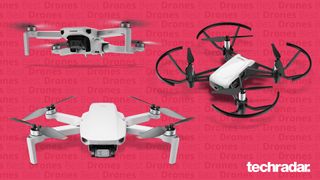
Welcome to our guide to the world's best drones with cameras for 2021. In this regularly updated guide you'll find our pick of the finest drones for aerial photography and filmmaking, based on our rigorous testing. (Looking for the best beginner drone ? Check out our separate guide on those).
What's the best drone in 2021? Right now, our pick is the DJI Air 2S. It hits the sweet spot of portability and performance better than any drone out there, thanks to its folding design, capable 1-inch sensor and range of beginner-friendly flying modes. The Air 2S is the ideal choice for novices and hobbyists alike.
That said, it might not be the perfect pick for everyone. If your budget's a bit tighter, the DJI Mini 2 is an even more compact and affordable choice for beginners. The DJI Phantom 4 Pro V2.0, meanwhile, remains a stable, wind-resistant option for experienced aerial filmmakers, while Powervision's PowerEgg X is a unique waterproof option.
Not sure what to look for when buying the best drone for you? Check out our guide below for the main things to look out for when choosing a drone with a camera – or skip that and move straight onto our ranked list.
Lastly, it's worth considering that Black Friday is almost here, which means we're likely to see some impressive Black Friday drone deals throughout November. If you're thinking of buying a drone, it's likely worth holding fire until mid-November, when the first deals will start appearing.
How to pick the right drone for you
So how exactly do you choose the right drone to buy? The obvious place to start is budget. This guide is focused on drones that have cameras for shooting aerial photography and video, which tend to be pricier than hobbyist stunt drones.
If you need 4K video quality, then we'd budget to spend at least $400 / £400. But if you're looking for a budget drone to improve your flying skills, rather than take high-quality footage and photos, then you can spend much less – the Ryze Tello, for example, costs just $99 / £99.
What specific features should you look out for? If you're looking for a drone that can automatically track you without needing to be directly controlled, look for one for a 'follow me' function. Models that have this function include the DJI Air 2S, DJI Mavic Air 2 and Skydio 2 (US-only).
Beginner fliers should also look out for drones with automated flight modes – like DJI's Intelligent Flight modes – which can pull off 'set piece' moves without the need for any real flying skills. Most drones use your smartphone as the controller, which plugs into an included pad – iOS and Android phones are usually both supported, but it's worth double-checking that your chosen drone works with your phone.
Something else that's worth checking are the local drone laws in your area. In many regions, drones that weigh below 250g don't need to be registered with local civil aviation authorities, which can give you a small saving. Most laws require you to keep your drone in line of sight, though, so you might not able to exploit its maximum range.
Photographers, meanwhile, should look out for raw photo support. This is less common in drones than cameras, but is becoming standard on newer models – the DJI Mini 2, for example, has raw support, but its DJI Mavic Mini predecessor doesn't.

- DJI ban: what it means for drone fans and the future of DJI

The best drone in 2021:
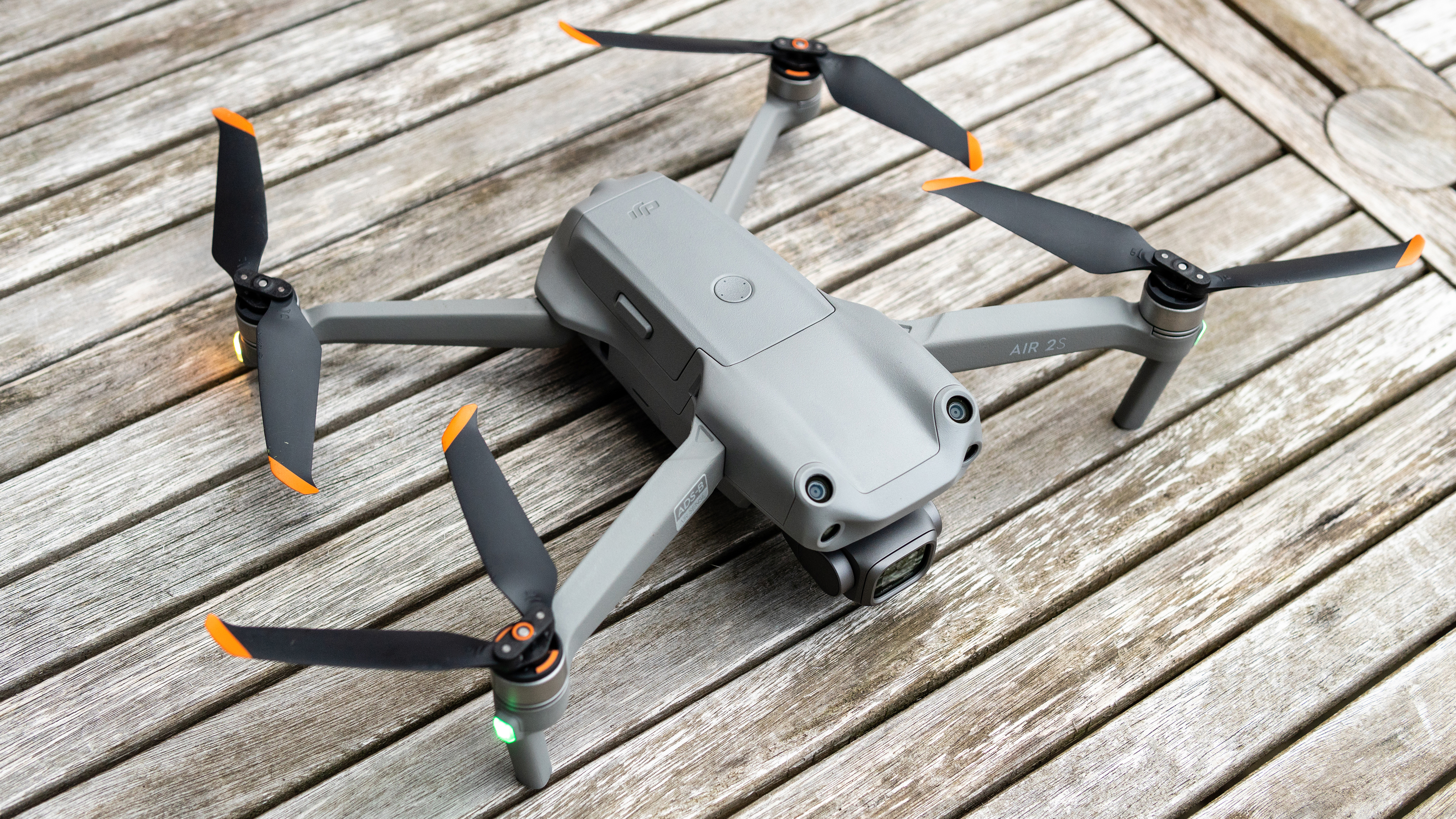
The best drone for most people
Specifications
Weight: 595g
Controller: Yes
Camera resolution: 20MP
Flight time: 31 minutes
Range: 8km-12km
Reasons to buy
+Large 1-Inch sensor +Small and lightweight
Reasons to avoid
-No adjustable aperture -Controller isn't foldable
The superb Air 2S combines the best features of our two previous favorite DJI drones, the Mavic Air 2 and Mavic 2 Pro. You get the compact, folding design of the former, plus the 20MP 1-Inch sensor found in the latter. The combination is a brilliant one, making the Air 2S our top choice for hobbyists and also pros who need a small drone that they can take anywhere.
While the Mavic Air 2 remains a good choice for those on a tighter budget, the Air 2S does deliver some handy advantages over its predecessor. The ability to shoot 5.4K video at 30fps gives you some extra creative flexibility, and supports a useful digital zoom option (even if we'd only recommend using that at 2x zoom). Throw in the ability to shoot 1080p at 120fps and some impressive high ISO performance, and you have a superb all-round flying machine that soars above its mid-range rivals.
- Read our in-depth DJI Air 2S review

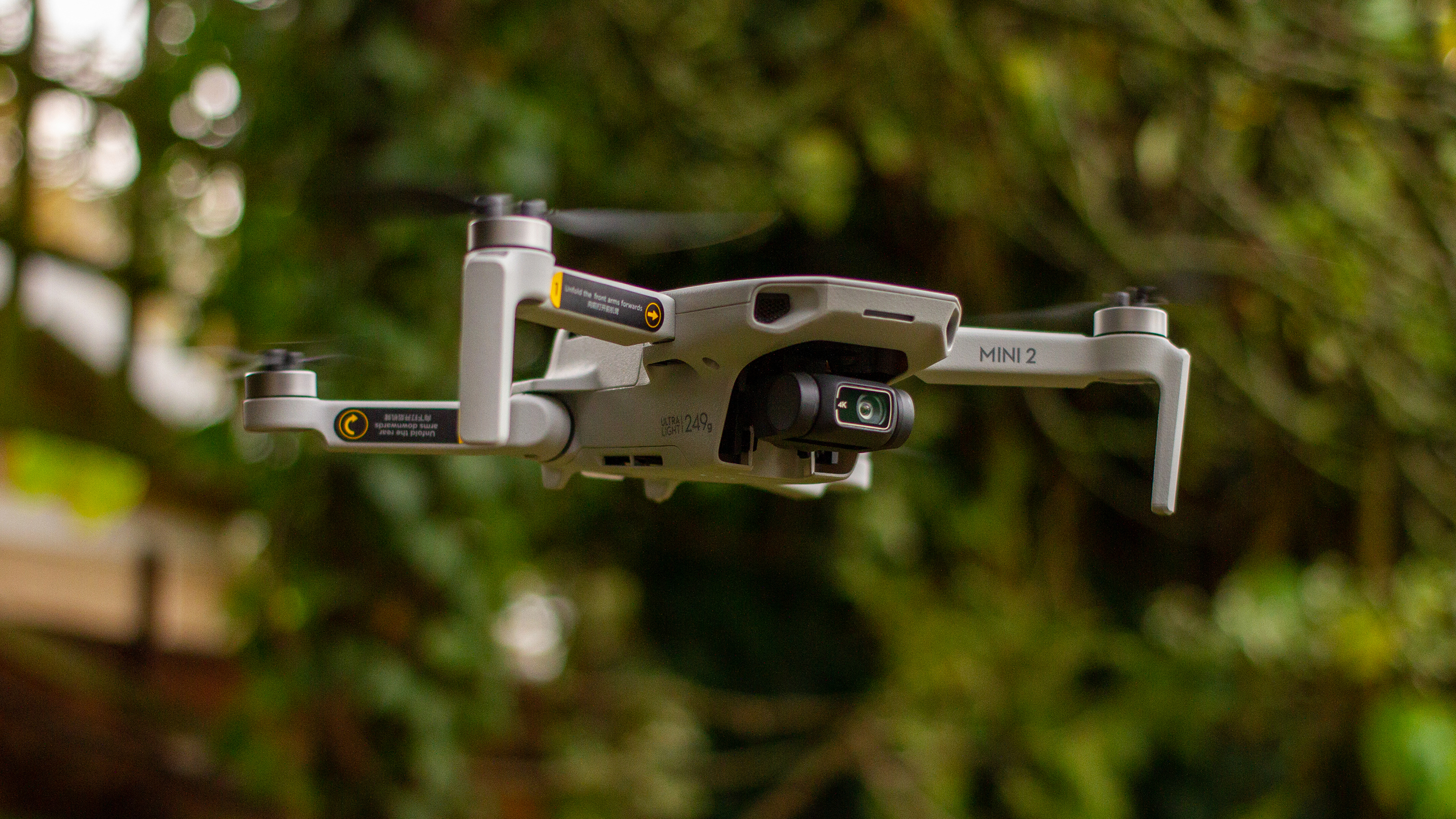
The best drone for beginners, now with 4K powers
Specifications
Weight: 249g
Controller: Yes
Camera resolution: 12MP
Battery size: 2,250 mAh
Range: 5.8 GHz: 10km (FCC); 6km (SRRC)
Reasons to buy
+Incredibly compact size +Impressive battery life +Simple controls and app
Reasons to avoid
-No 'follow me' mode -Pricier than Mavic Mini
One of our few complaints about the DJI Mavic Mini was that it couldn't shoot 4K video – this excellent successor fixes that, while giving us a few extra treats in the process. The Mini 2 has the same ultra-compact design as before, making it the joint-smallest drone in DJI's line-up, but comes with a new controller that boosts it range (thanks to Ocusync 2.0 connectivity) and delivers a more polished flying experience.
Like the Mavic Mini, it's packed with a generous selection of beginner-friendly QuickShot modes, which see the drone perform pre-programmed moves. But the Mini 2 offers more for pro snappers, too, thanks to the inclusion of raw photo shooting, while 4K video means the arrival of a boosted 100mbps bit-rate. Sure, the Mini 2 isn't otherwise a huge step up from the Mavic Mini, but it's undoubtedly the best compact drone you can buy.
- Read our in-depth DJI Mini 2 review

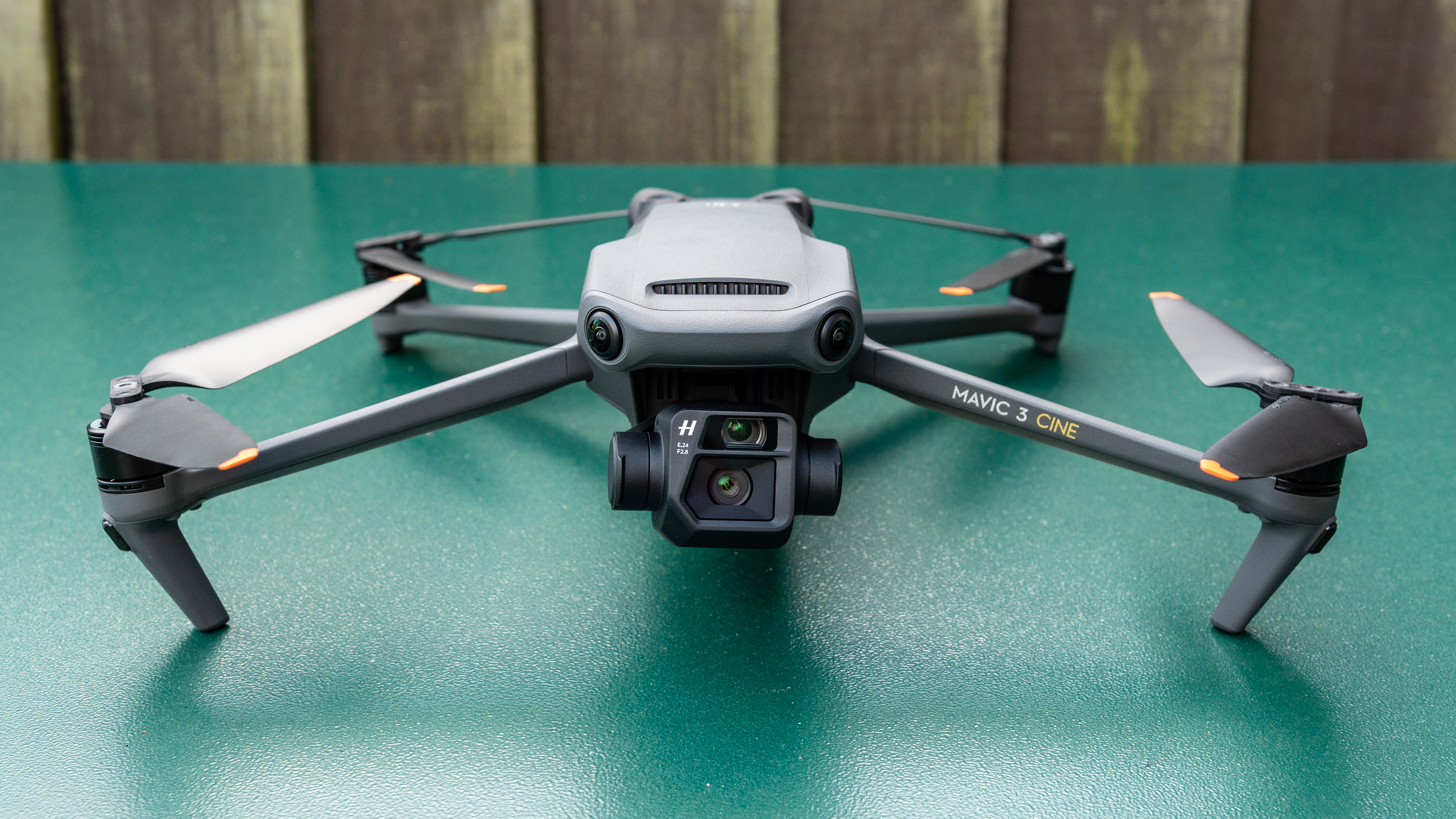
The world's most powerful compact drone (with a big price tag)
Specifications
Weight: 895g (Mavic 3 Cine, 899g)
Controller: Yes
Camera resolution: 20MP
Flight time: 46 minutes
Range: 15km (FCC), 12km (CE)
Reasons to buy
+Superb Four Thirds camera +Adjustable aperture +Telephoto lens
Reasons to avoid
-Pricier than rivals -Some missing features at launch
Looking for the most powerful compact drone around? The DJI Mavic 3 is it. This aerial powerhouse is fronted by a dual-camera that mixes a large, 20MP Four Thirds sensor with a handy 162mm telephoto lens. And the Mavic 3 fits this into in a backpack-friendly bundle that's somehow lighter than the Mavic 2 Pro model it's based on.
Other improvements over its predecessor include a 46-minute battery life (in reality, about half an hour of actual flight time) and the ability to shoot 5K/50p video or 4K/120p slow-mo footage. Upgrade to the DJI Mavic 3 Cine bundle, and you'll get 1TB of internal storage, a very fancy DJI RC Pro controller and the ability to shoot video in Apple ProRes 422 HQ format.
The Mavic 3 isn't perfect: some features like ActiveTrack 5.0 tracking won't be available until a firmware update in January 2022, and it comes with a hefty price premium over the Mavic 2 Pro that non-professionals might struggle to justify. But if outright image quality is your main focus, then the Mavic 3 is the best around (with a price tag to match).
- Read our in-depth DJI Mavic 3 review
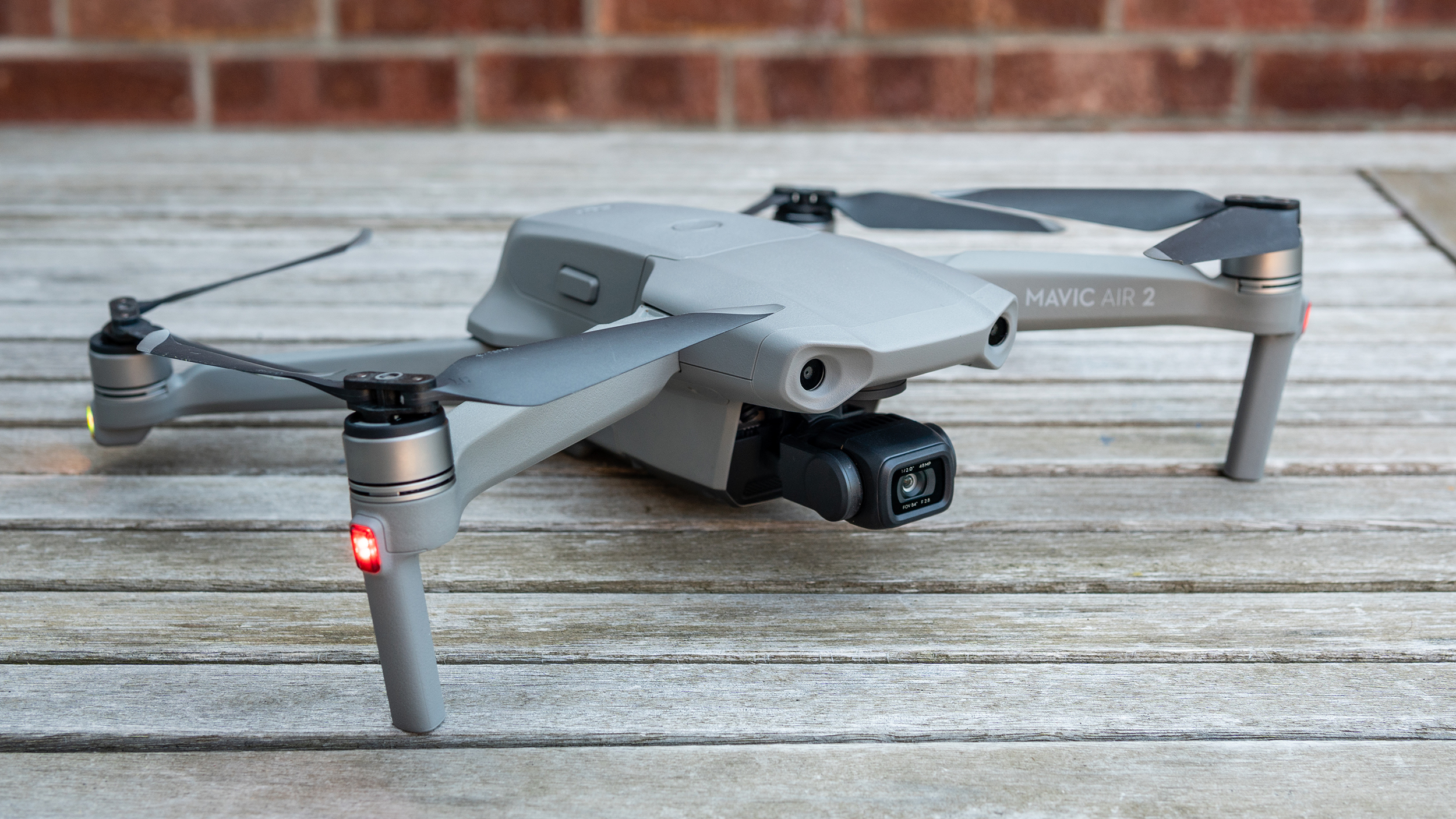
Still offers great value for hobbyist fliers
Specifications
Weight: 570g
Controller: Yes
Camera resolution: 12MP
Battery size: 3,950 mAh
Range: 10km
Reasons to buy
+Very easy to fly +Shoots great 4K/60p video +Strong 34-minute battery life
Reasons to avoid
-Camera feed sometimes stutters -No screen on the controller
Previously our number one drone, the Mavic Air 2 has been nudged out of the limelight by the arrival of the DJI Air 2S (see number one). But you shouldn't necessarily discount it as an option – it's more affordable than the Air 2S and may just suit you better, if you don't need the new model's larger 1-Inch sensor.
It still shoots 4K/60p video, boasts an impressive 34-minute flight time and has a comparable maximum 10km range. You also get the same subject-tracking goodness as the Air 2S, a slightly longer 34-minute flight time, and that handy, compact folding design. While we'd stretch to the Air 2S if you can, due to its larger sensor and useful digital zoom, the Mavic Air 2 remains a great value option that is well worth considering.
- Read our in-depth DJI Mavic Air 2 review

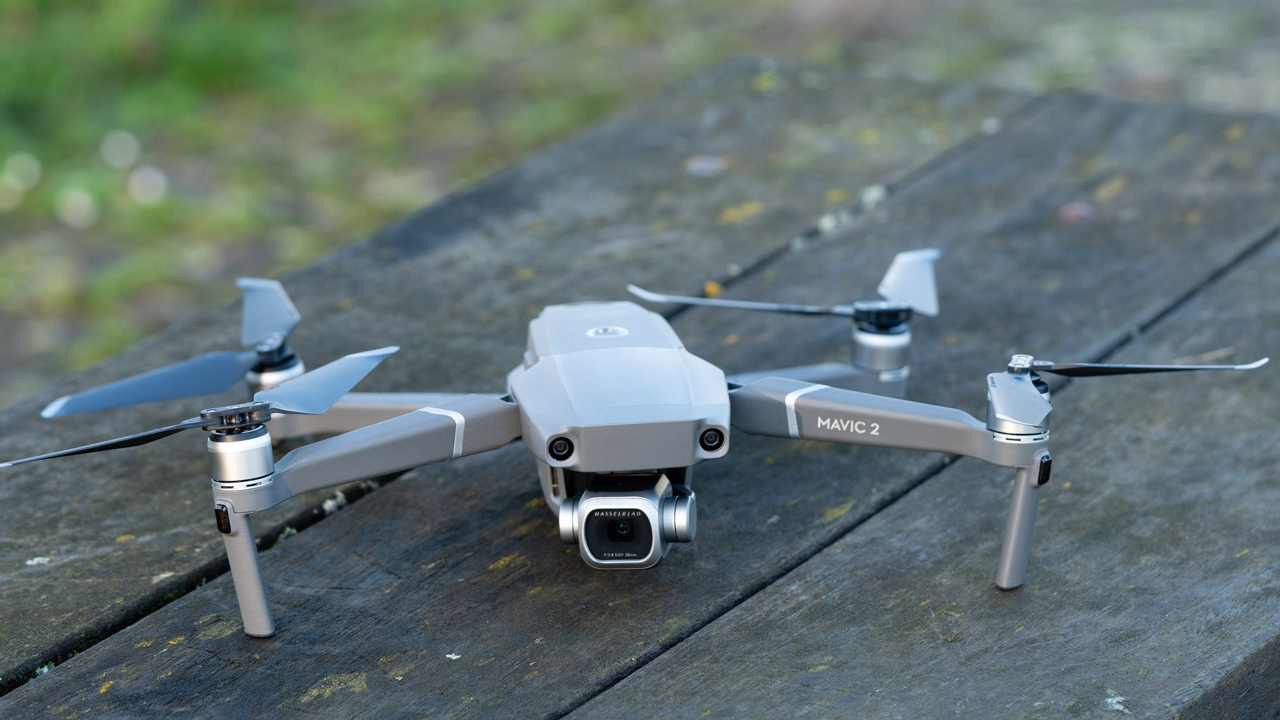
Nudged out of the spotlight by the Mavic 3, but look out for discounts
Specifications
Weight: 907g
Controller: Yes
Camera resolution: 20MP
Flight time: 3,950 mAh
Range: 8km
Reasons to buy
+Excellent foldable design +Advanced yet easy to fly +One-inch 20MP sensor
Reasons to avoid
-Noise is a problem above ISO 100 -No portrait shooting option
The classic Mavic 2 Pro, which landed in August 2018, finds itself in a difficult spot – most of its features can be found in the smaller DJI Air 2S, while its design has been pinched by the significantly more powerful DJI Mavic 3. So should it be completely discounted? Not necessarily. Unlike the Air 2S, it offers variable aperture for changing your exposure mid-flight. And it's significantly more affordable than the Mavic 3.
The DJI Air 2S offers better value in a smaller package, but the older Mavic 2 Pro still delivers outstanding image quality from its 20MP 1-inch sensor, plus impressive 4K/30p video. There's raw support for pro-level images and, unlike the Air 2S, it also offers that adjustable aperture (which lets you switch between f/2.8 and f/11) for in-flight f-stop tweaks – a real bonus for those who prefer to manually control exposure. We'd still recommend most people go for the Air 2S instead, but given its age it's worth keeping an eye out for discounts on the Mavic 2 Pro.
- Read our in-depth DJI Mavic 2 Pro review

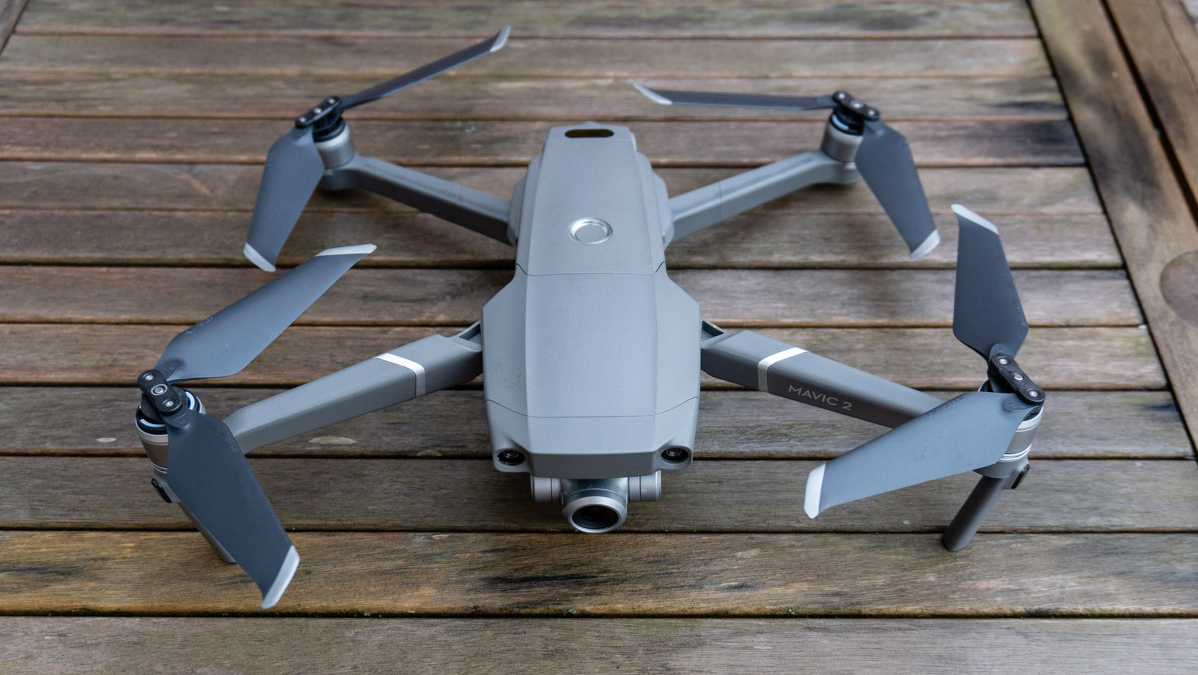
A lightweight flyer whose optical zoom is still pretty unique
Specifications
Weight: 905g
Controller: Yes
Camera resolution: 12MP
Battery size: 3,950 mAh
Range: 8km
Reasons to buy
+Easy to fly and intuitive to control +24-48mm optical zoom lens
Reasons to avoid
-Small 12MP sensor -Noise is a problem above ISO 100
Like the Mavic 2 Pro, the Mavic 2 Zoom landed back in August 2018, which means it's largely been succeeded by the newer Air 2S and Mavic 3 (see above). But despite the latter's inclusion of a 162mm telephoto lens, the Zoom still offers a unique 24-48mm optical zoom lens. If you're looking to capture close-up shots of subjects like people, while still maintaining the safe and legal distance of 50m, then it's still worth considering due to the quality of that optical zoom.
Because of its smaller 12MP sensor, image quality doesn't quite match the Mavic 2 Pro and the f/2.8 aperture is fixed, but photos and videos are still more than good enough for professional use. Range is also good and control is intuitive via the partner app. The real boon, though, is that zoom lens, which unlocks a world of creative shooting potential, even if the Mavic 3 beats it for outright reach.
- Read our in-depth DJI Mavic 2 Zoom review

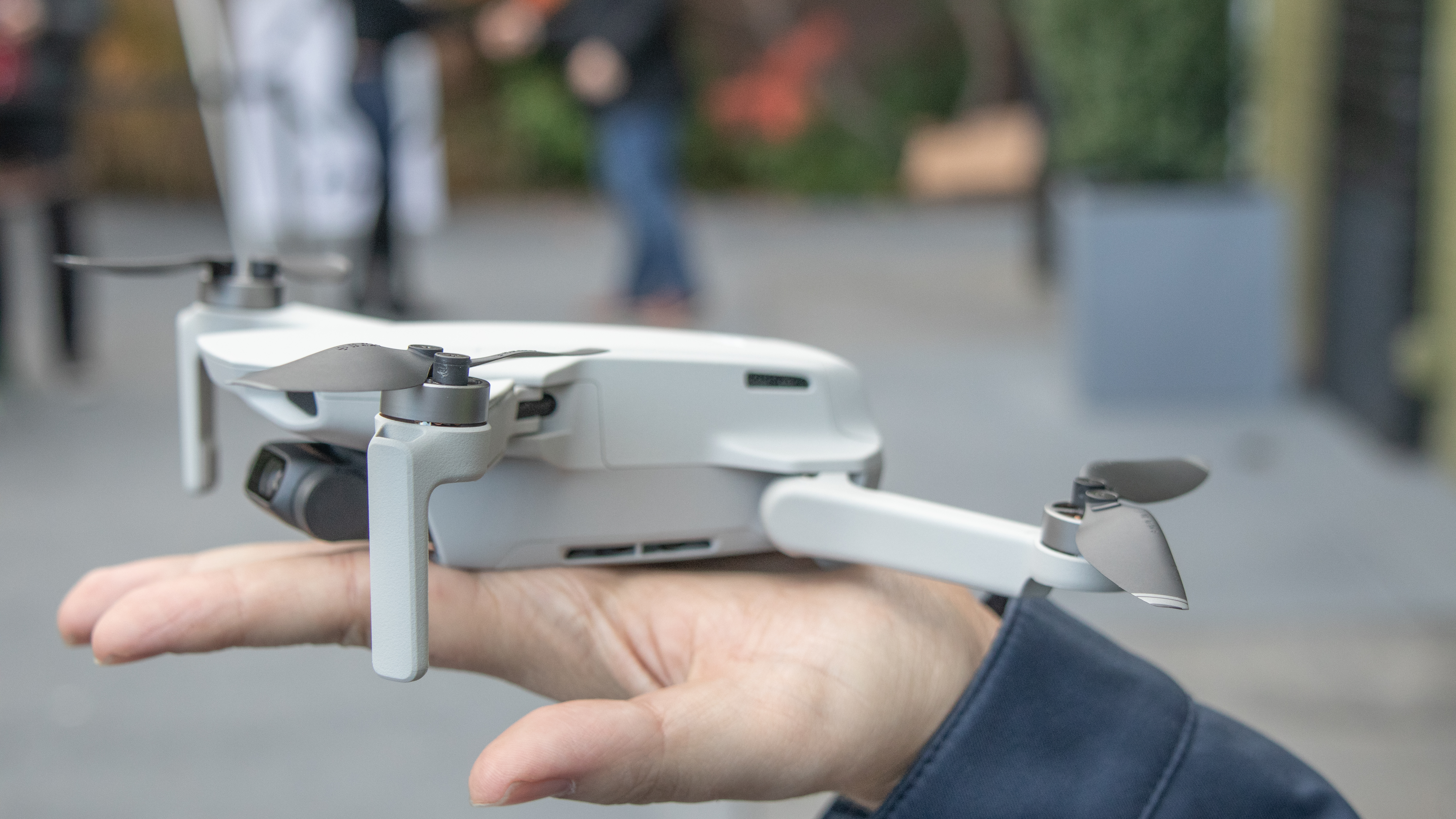
Still a good pick for beginners who don't need 4K video
Specifications
Weight: 249g
Controller: Yes
Camera resolution: 12MP
Battery size: 2,600 mAh
Range: 5.8 GHz: 4000 m (FCC); 2500 m (SRRC)
Reasons to buy
+Smart, collapsible design +Incredibly stable video capture
Reasons to avoid
-No 4K or 60fps 2.7K video -No object tracking
It's now been succeeded by the DJI Mini 2, but this ultra-compact drone will remain on sale – and that's good news for anyone who needs a slightly more affordable palm-sized drone with impressive video quality. Compared to its newer sibling, you miss out on raw photo capture, Ocusync 2.0 connectivity (for improved range) and some new motors, but the Mavic Mini is otherwise very competitive and still streaks ahead of any other drone in its weight category.
Just like on the Mini 2, it's a shame there's no ActiveTrack object tracking or 'follow me' function, but if you're simply looking to take your first step in aerial photography or videography, the Mavic Mini is a great option. We'll be keeping a close eye on its price tag, too, to see if moves further into super-bargain territory.
- Read our in-depth DJI Mavic Mini review

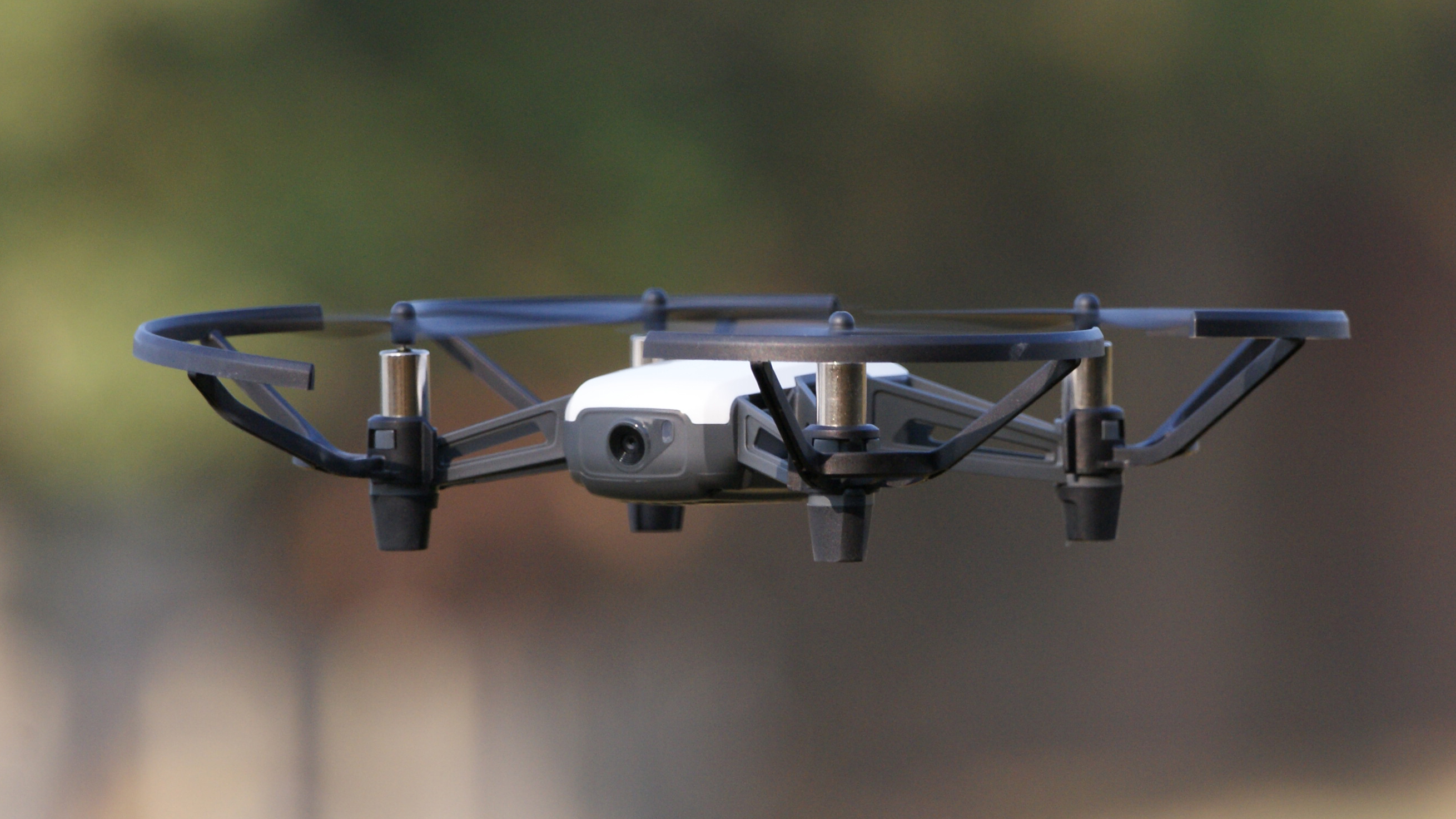
A straightforward flyer that's affordable and fun
Specifications
Weight: 80g
Controller: Optional
Camera resolution: 5MP
Flight time: 13 minutes
Range: 100m
Reasons to buy
+Responsive flight controls +Lightweight and compact
Reasons to avoid
-Choppy video transmission -Unstable in wind
Simple, lightweight and affordable, the Ryze Tello is designed to be a fun drone for first-time flyers. And despite its budget price tag, the Tello offers plenty: the battery serves up a reasonable 13 minutes of flight time, while downward-facing light sensors allow the Tello to hover in place and perform a handful of automated tricks.
Image quality from the nose-mounted 5MP camera is less impressive, with a limited dynamic range and noticeable compression artifacts when streaming 720p HD video. Because video is beamed directly to your smartphone, the frame rate is affected by any drop in connection strength.
That said, the app is refreshingly simple and makes for a straightforward way to pilot the Tello, with an on-screen twin-stick setup that's rewardingly responsive. The theoretical range is 100m, but 30-40m is more realistic – which, given how even the slightest breeze can blow the 80g Tello off course, is not necessarily a bad thing.
The Ryze Tello is fundamentally a fun drone to fly on a calm day, zipping along at a rapid chop and reacting nimbly to intuitive inputs. The limited range is somewhat restrictive but, provided you don't mind choppy video, it's nevertheless the best starter drone around.
- Read our in-depth Ryze Tello review


A pro-friendly choice for those who need a sturdy, powerful quadcopter
Specifications
Weight: 1375g
Controller: Yes
Camera resolution: 20MP
Battery size: 6000mAh
Range: 8km
Reasons to buy
+Large 1-inch 20MP sensor +Sturdy and fast drone +Shoots 4K/60p video at 100Mbps
Reasons to avoid
-Large and bulky -Pricier than Mavic 2 Pro -More complex than foldables
DJI's Phantom range was the series that really took its drones to new heights – and while the Phantom 4 Pro V.20 isn't the newest model in this list, it remains a fine option for professionals who need something sturdy and reliable for windy conditions. Launched in 2018, the Phantom 4 Pro V2.0 was a big upgrade on the Phantom 4, bringing vastly improved obstacle avoidance and intelligent flight modes like ActiveTrack. Its 20MP 1-inch sensor can also shoot impressive raw stills and 4K/60p video at 100Mbps in the D-log color profile.
Of course, the Phantom 4 Pro V2.0's size (it weighs 1,375g) means it isn't as convenient as the foldable Mavic 2 Pro, which also has a 20Mp 1-inch sensor. But it does also bring a mechanical shutter (for avoiding rolling shutter) and boasts a higher 4K frame-rate than its smaller sibling. With some excellent handling and 30 minutes of flight time, it's certainly worth considering if you need to shoot high-quality aerial stills and video in challenging weather that might be too much for the Mavic 2 Pro.
Read our in-depth DJI Phantom 4 Pro V2.0 review

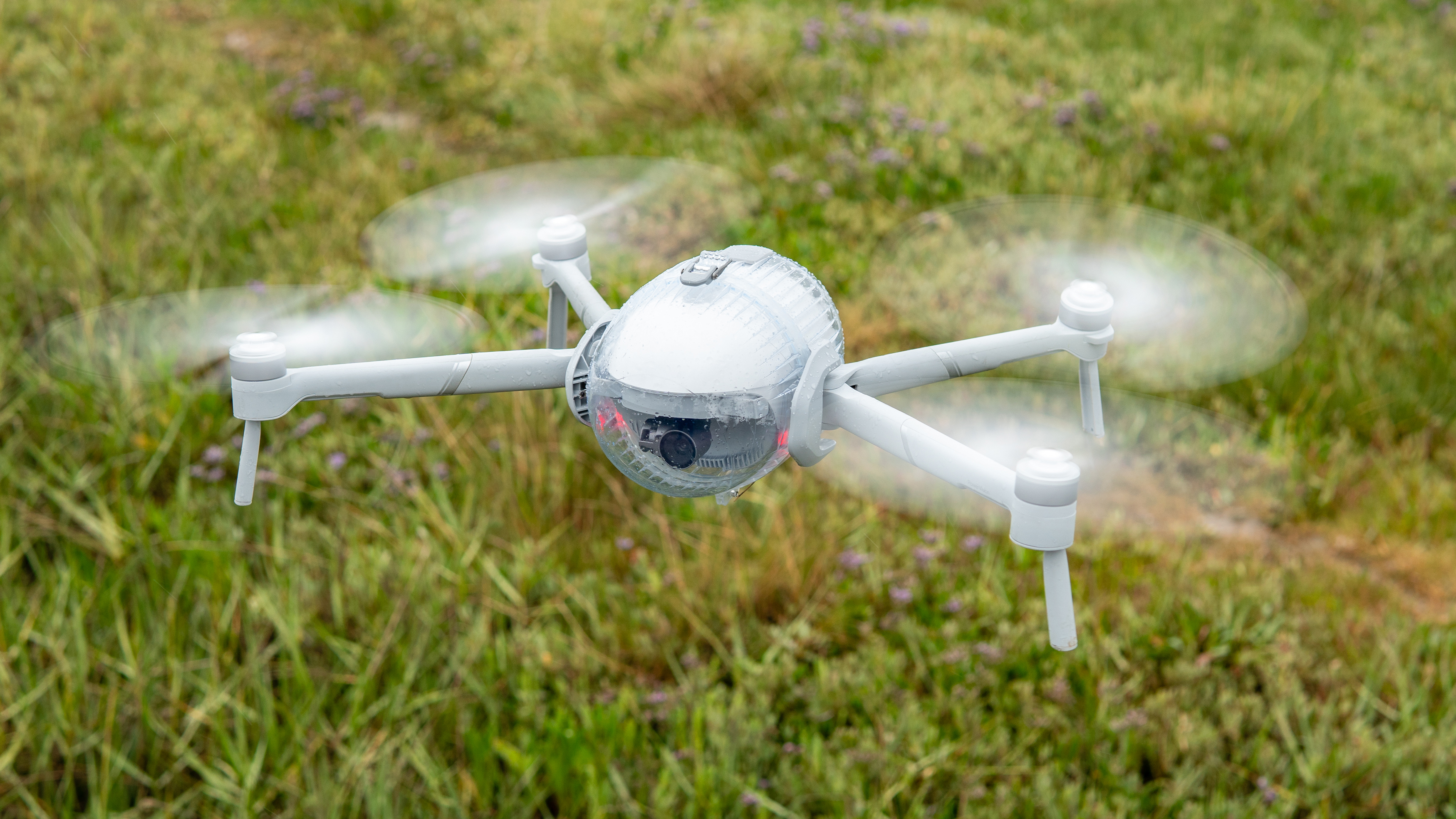
An all-weather drone that converts into a handheld camera
Specifications
Weight: 522g
Controller: Yes
Camera resolution: 12MP
Flight time: 3,800 mAh
Range: 6km
Reasons to buy
+Can fly in rain and land on water +Converts into a handheld camera
Reasons to avoid
-Image quality falls short of rivals -Lacks Raw video modes
Ignore the culinary name: the PowerEgg X is a flyer, not a fryer. And in a market dominated by drones that don't like water, PowerVision's aerial orb is distinctive in its ability to fly in the rain and land on lakes (with the Wizard bundle). Image quality is affected by the plastic waterproof housing, but being able to operate in – and float upon – the wet stuff opens up a range of creative possibilities.
So, too, does the versatile modular design. The PowerEgg X can also be deployed as a handheld gimbal camera and an autonomous AI camera, which can be mounted to a tripod and controlled with hand-gestures. The flip-side of the adaptable setup is that it's slower to deploy. It might be lightweight, but removing the protective casing from the body, adding the propeller arms and setting up the controller takes a few minutes.
Image quality isn't class-leading, either. The PowerEgg X does produce decent, detailed 4K footage in bright conditions, but the fixed aperture, fixed-focus 12MP 1/2.8-inch CMOS sensor can't compete with DJI's Mavic drones. It's also not currently possible to record in Raw video formats. Still, for short, sharp video sequences in bad weather, the PowerEgg X is one of the best options around.
- Read our in-depth PowerVision PowerEgg X review

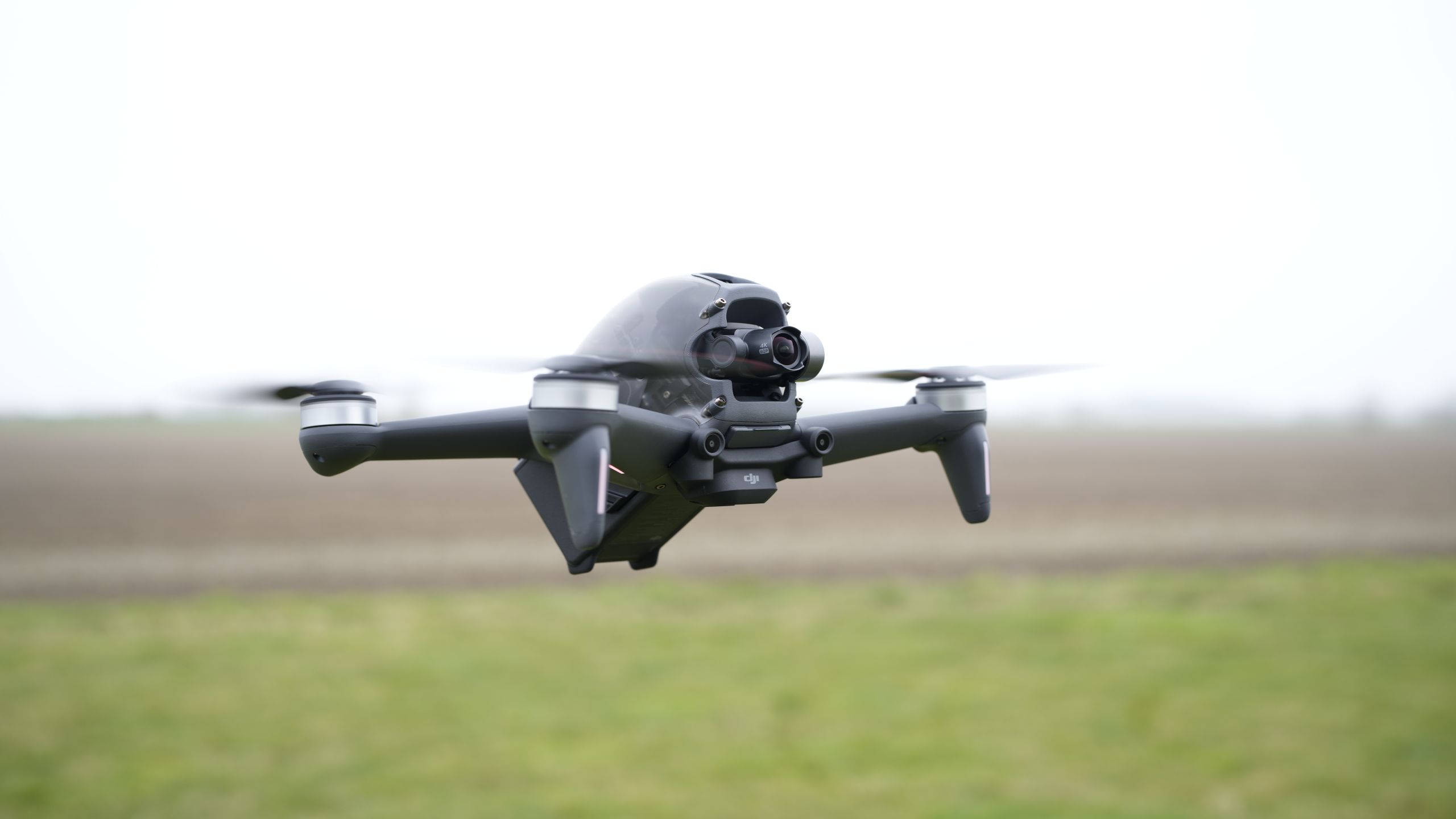
A fun introduction to first-person flying
Specifications
Weight: 795g
Controller: Yes
Camera resolution: 12MP
Battery Size: 2000mAh
Range: 10km (FCC), 6km elsewhere
Reasons to buy
+Easy to fly for an FPV drone +Headset provides great image quality +Solid transmission with the drone
Reasons to avoid
-Props visible in footage -Limited shooting modes -More restrictive flying laws
The DJI FPV is a unique drone that's a great introduction to first-person view flying. Like a combination of a speedy racing drone and DJI's Mavic series, it's a huge amount of fun to fly thanks to its impressive video headset, which gives you the sensation of soaring like an eagle. But it's also comes with a few more limitations than DJI's other drones.
One of the main drawbacks is the laws around flying FPV drones – while this varies depending on which country you're in, most regions require you to have a 'spotter' companion standing next to you as you fly, because the DJI Goggles V2 mean the pilot won't have direct line of sight with the drone.
If you're not planning to fly solo, though, and don't mind this restriction, then the DJI FPV is a fantastic option for first-timers. It's faster and more nimble than any other DJI drone, with a top speed of 87 mph, but also has three different flight modes (Normal, Sport and Manual) to help it appeal to different kinds of flier.
Unlike most FPV drones, it's also capable of shooting very impressive 4K video. The gimbal is only a single-axis affair (rather than the three-axis kind you get on the likes of the DJI Mavic Air 2), but electronic image stabilization steps in to ensure the footage is smooth, and you can also shoot 1080p in a slo-mo frame-rate of 120fps.
If you're looking for automated flying modes, though, then you'll be better off with the DJI Air 2S – this drone is all about the FPV flying experience, with the added bonus of shooting 4K video and 12MP stills. It does that very well, but comes with a learning curve and legal restrictions that ensure it's a little more niche than DJI's other drones – hence it's position a little further down this list.
- Read our in-depth DJI FPV review

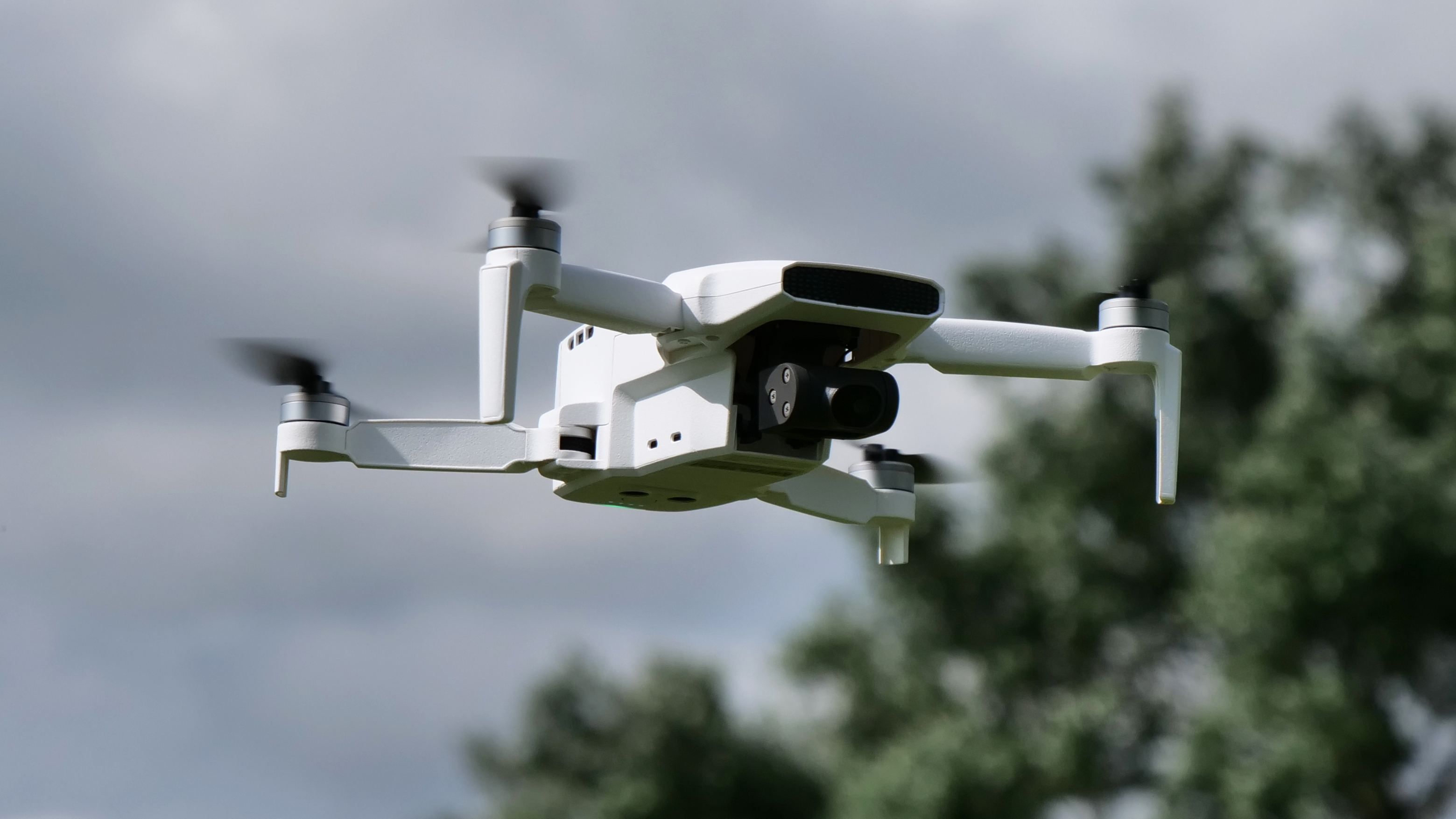
A more affordable 4K alternative to the DJI Mini 2
Specifications
Weight: 258g
Controller: Yes
Camera resolution: 12MP
Battery Size: 3500mAh
Range: 8km
Reasons to buy
+Easy to fly +Excellent battery life +Decent image quality
Reasons to avoid
-No front collision sensors -Less polished than DJI Mini 2
While we think the DJI Mini 2 is the better mini drone overall, the impressive FIMI X8 Mini is a more affordable alternative – and well worth considering if you can't stretch to the Mini 2's price tag. It shoots high-quality 4K video with lots of detail, even if the dynamic range is understandably limited given its relatively small 1/2.6-inch sensor. And its companion app, while a little rough around the edges, is stable and offers a range of automated flight modes.
The X8 Mini can also be handily charged via USB-C and has a bundled controller that is actually more solidly built than the drone itself. If you just want a direct connection with your phone instead, there's also a 5.8Ghz Wi-Fi flight mode (although the range is limited to 100m when doing this). Overall, the FIMI X8 Mini offers good value for money and is a good DJI alternative – even if it isn't exactly a tech minnow, being part of the Xiaomi family.
- Read our in-depth FIMI X8 Mini review

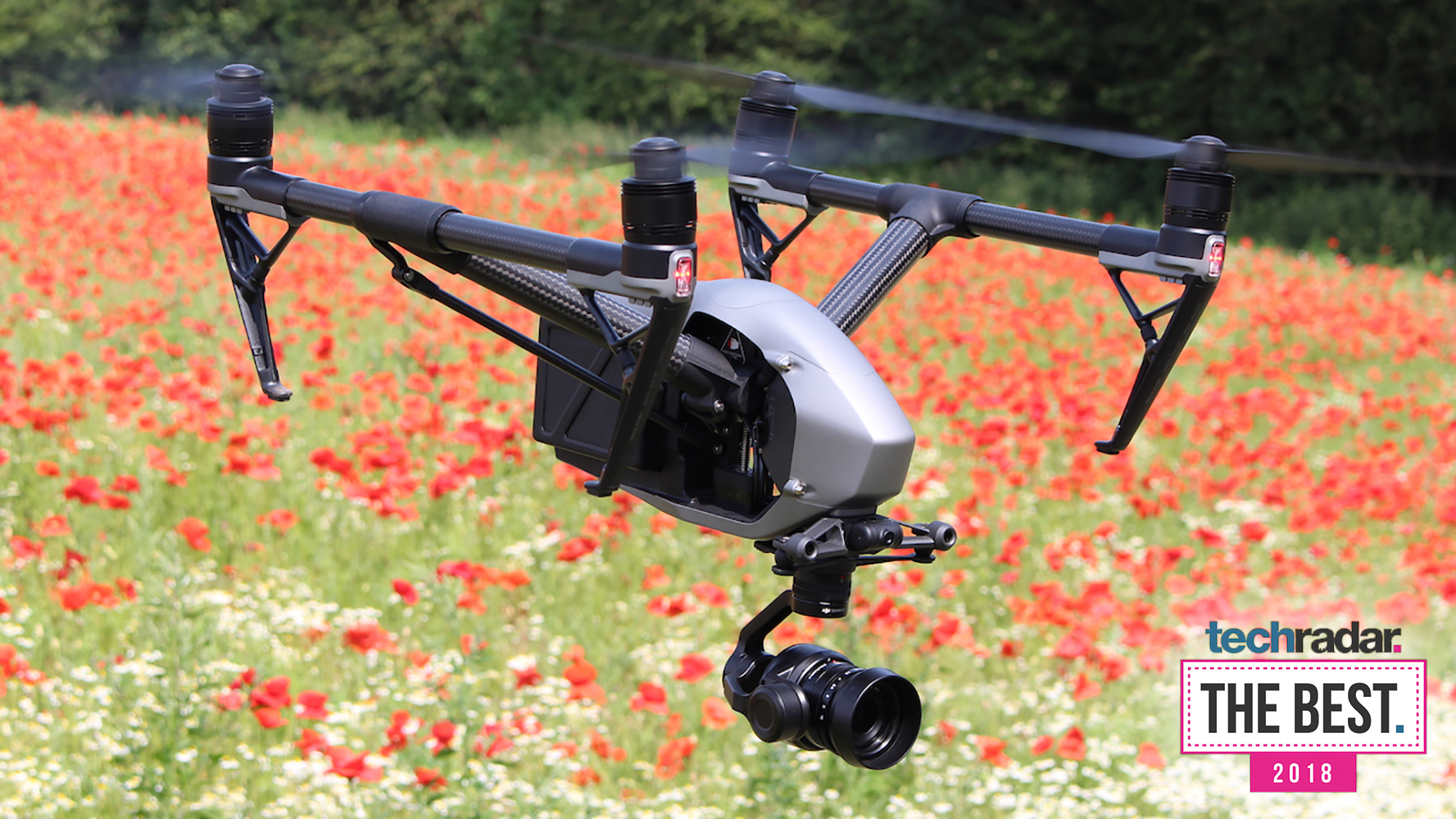
A powerful flagship-level drone for pros
Specifications
Weight: 3440g
Controller: Yes
Camera resolution: 30MP
Battery Size: 4280mAh
Range: 7 km
Reasons to buy
+Amazing build quality +Good battery life +Plenty of features
Reasons to avoid
-Quite pricey
Soundly knocking its predecessor out of this list is the highly impressive Inspire 2. With a sleek metal composite bodywork upgrade, it's a much more attractive piece of kit. What's more, with more advanced object avoidance technology you don't have to worry about that beautiful body getting scratched by you accidentally clipping a tree.
You get more than 25 minutes of flight time out of the twin-battery arrangement, and the ability to swap camera lenses means that professional photographers and videographers have complete control over their images and 5K video.
The fully-featured smartphone app and dedicated remote control make this drone incredibly easy to control, but make no mistake, this is a professional piece of kit.
- Read our in-depth DJI Inspire 2 review

Should you buy DJI drones?
Despite the US government's decision in December 2020 to place Chinese drone maker DJI on its 'Entity List' – a trade blacklist that Huawei found itself on in 2019 – we're still more than happy to recommend its flying cameras.
There are a few reasons for this. Firstly, the US government hasn't yet explained exactly why DJI was added to its 'Entity List' and DJI itself has strong refuted the decision, saying it "has done nothing to justify being placed on the list".
Also, more recently in June 2021, the Pentagon released a report stating that two "Government Edition" DJI Drones are "recommended for use by government entities". This doesn't mean that DJI has been given the all-clear, and Congress is mulling over a law that could ban the government for five years from 2023.
But for consumers, there's no sign that DJI will be banned from selling its drones in the US – instead, the trade blacklist simply restricts DJI's access to US technologies for future products. So while it may well affect DJI's supply chains, all the big retailers like Amazon are still selling the company's drones as usual.
The decision of whether or not to buy DJI drones is a personal one, but we are very happy to continue recommending its class-leading models as usual. Right now, models like the DJI Air 2S remain the best in their class, and we see no reason not to recommend them to anyone looking to step into aerial photography.
How we test drones
While the cameras are the main focus of the drones we review, we also test their flying performance to see how easy they are to operate. We check their stabilization in the air, their responsiveness and their top speed. Perhaps most importantly, we also assess their obstacle avoidance – which is particularly crucial if you want a drone that automatically tracks and follows a subject.
After testing the drone's battery life claims based on some real-world flights, we then move onto their cameras. We shoot a range if clips at different resolutions and frame-rates, including high-contrast scenes to push their dynamic range to the limit, plus some low-light scenes. Automated flight modes are also tested to see whether they're genuinely useful or fun gimmicks.
These videos are then assessed on a calibrated monitor, along with the drone's still photos (which we shoot in maximum resolution in both JPEG and raw, at various ISOs). When it comes to image quality, we look at detail, sharpness across the frame, and high ISO noise handling, to see which conditions you can reasonably expect to shoot usable video and stills in. We then combine these results with our overall impression of the drone's design, features and value to produce our final verdict.
- Best DJI drones
- Check out the best beginner drones in the world right now
- Browse all the latest drone deals
- Best vlogging cameras
- These are the best YouTube cameras you can buy right now
- UK drone laws: where can and can't you fly your drone?
- DJI Mavic Air 2 vs Mavic 2 Pro: which is the best drone for you?

Mark is the Cameras Editor at TechRadar. Having worked in tech journalism for a ludicrous 17 years, Mark is now attempting to break the world record for the number of camera bags hoarded by one person. He was previously Cameras Editor at Trusted Reviews, Acting editor on Stuff.tv, as well as Features editor and Reviews editor on Stuff magazine. As a freelancer, he's contributed to titles including The Sunday Times, FourFourTwo and Arena. And in a former life, he also won the Daily Telegraph's Young Sportswriter of the Year. But that was before he discovered the strange joys of getting up at 4am for a photo shoot in London's Square Mile.
How To Make Money With Your Drone
Source: https://www.techradar.com/in/news/best-drones
Posted by: clarkshormilt.blogspot.com

0 Response to "How To Make Money With Your Drone"
Post a Comment